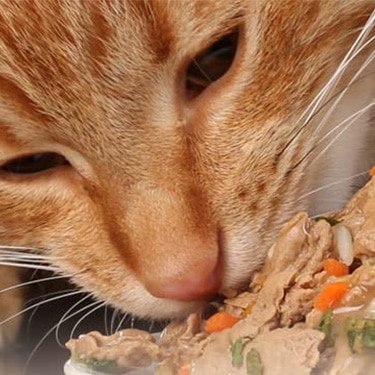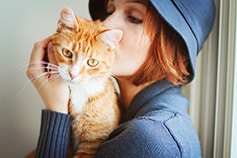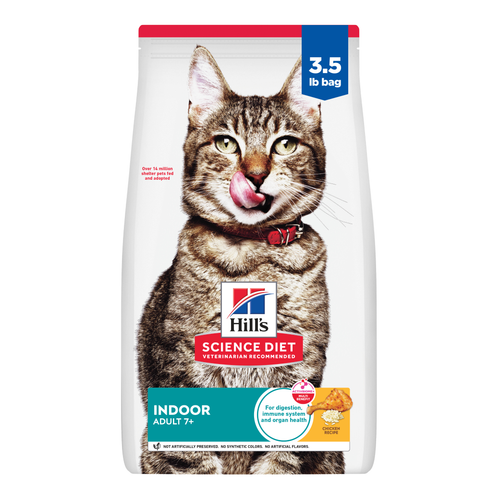
-
Find the right food for your petTake this quiz to see which food may be the best for your furry friend.Find the right food for your petTake this quiz to see which food may be the best for your furry friend.Featured products
 Adult Chicken & Barley Recipe Dog Food
Adult Chicken & Barley Recipe Dog FoodSupports lean muscle and beautiful coat for adult dogs
Shop Now Adult Large Breed Chicken & Barley Recipe Dog Food
Adult Large Breed Chicken & Barley Recipe Dog FoodSupports healthy joints, lean muscle, and beautiful coat for large breed dogs
Shop Now Hill's Science Diet Adult Chicken & Beef Entrée Dog Food
Hill's Science Diet Adult Chicken & Beef Entrée Dog FoodChicken & Beef Entrée in a delicious loaf with complete & balanced nutrition to help keep adult dogs active and healthy
Shop NowFeatured products Adult Turkey & Liver Entrée Cat Food
Adult Turkey & Liver Entrée Cat FoodPrecisely balanced nutrition with the delicious taste of minced turkey & liver to help fuel the energy needs of cats during the prime of their life
Shop Now Adult Tender No Corn, Wheat, Soy Chicken & Vegetables Stew Cat FoodShop Now
Adult Tender No Corn, Wheat, Soy Chicken & Vegetables Stew Cat FoodShop Now Senior Vitality Adult 7+ Tuna & Vegetables Stew
Senior Vitality Adult 7+ Tuna & Vegetables StewImproves Everyday Ability to Get Up & Go
Shop Now -
Dog
- Dog Tips & Articles
-
Health Category
- Weight
- Food & Environmental Sensitivities
- Urinary
- Digestive
- Joint
- Kidney
-
Life Stage
- Puppy Nutrition
- Adult Nutrition
- Senior Nutrition
Cat- Cat Tips & Articles
-
Health Category
- Weight
- Skin & Food Sensitivities
- Urinary
- Digestive
- Kidney
-
Life Stage
- Kitten Nutrition
- Adult Nutrition
Featured articles What Is Littermate Syndrome? Pet Adoption Guide
What Is Littermate Syndrome? Pet Adoption GuideLearn more about littermate syndrome in dogs and cats and how to successfully navigate adoption and early socialization processes.
Read More The Science Behind Our Love for Pets
The Science Behind Our Love for PetsLearn the scientific reasons why we have such strong connections with our pets, and what science says about the love between humans and our furry friends.
Read More How to Properly Mix Wet & Dry Pet Foods
How to Properly Mix Wet & Dry Pet FoodsAn Orange cat eating from a bowl filled with mixed food
Read More -



Why Kidney Disease is a Killer in Cats…But Doesn't Have to Be
Most people recognize cancer as the silent killer of cats, but did you also know kidney disease can take your cat's life unexpectedly? In fact, according to the Morris Animal Foundation, chronic kidney disease (CKD) is the number one killer of cats in the U.S. To better prepare and protect your cat from this horrible affliction, read on and learn a bit more about how kidney disease affects cats.
1. Kidneys are Vital
According to the Washington State University College of Veterinary Medicine, your cat's kidneys "act as a complex filter that removes from blood wastes that are generated from break down of food, old cells, toxins or poisons and many drugs that are given for treatment of other diseases." Your cat's two kidneys also help regulate blood pressure and calcium and vitamin D metabolism, as well as produce a substance that helps with the creation of new red blood cells. Due to the various functions of the kidneys, a cat with kidney disease may display a multitude of signs. However, these signs may not become apparent as quickly as you'd imagine.


Tasty Tips
2. Visible Kidney Disease Signs May Take Time
Kidneys are made up of microscopic nephrons. As your cat ages or if the kidneys become damaged, some nephrons begin to die and other reserve (or "resting") nephrons take over. Once there are no extra nephrons remaining, your cat may begin to display signs of kidney damage such as loss of appetite, weight loss, increased thirst, and anemia. However, this often only occurs once 75% of kidney function (2/3 of nephrons) has been lost. This is why it is so important that you bring your cat to your veterinarian at least once a year and remain vigilant for unusual signs in your cat's behavior. It may help prevent your cat from developing kidney disease in the first place.
For the complete slideshow on 4 Must-Know Facts About Kidney Disease in Cats, visit petMD.
Related products


Supports energy level and beautiful fur in mature indoor cats

Improves Everyday Ability to Get Up & Go

Precisely balanced nutrition with the delicious taste of minced turkey & liver to help fuel the energy needs of cats during the prime of their life
Related articles

When you adopt a cat, you don't just gain a best friend; you also save her life. Here's why getting a cat from a local animal shelter makes so much sense.

Learn how to litter train a kitten with this guide to potty training, including when to start litter training kittens and troubleshooting tips.

Discover how to train your cat, starting with very basic first steps that both reward good behavior and discourage the bad.

Discover which cat toys games your feline friend might like, and how they are great sources of exercise. Explore our library of articles to learn more.

Put your cat on a diet without them knowing
Our low calorie formula helps you control your cat's weight. It's packed with high-quality protein for building lean muscles, and made with purposeful ingredients for a flavorful, nutritious meal. Clinically proven antioxidants, Vitamin C+E, help promote a healthy immune system.
Put your cat on a diet without them knowing
Our low calorie formula helps you control your cat's weight. It's packed with high-quality protein for building lean muscles, and made with purposeful ingredients for a flavorful, nutritious meal. Clinically proven antioxidants, Vitamin C+E, help promote a healthy immune system.


